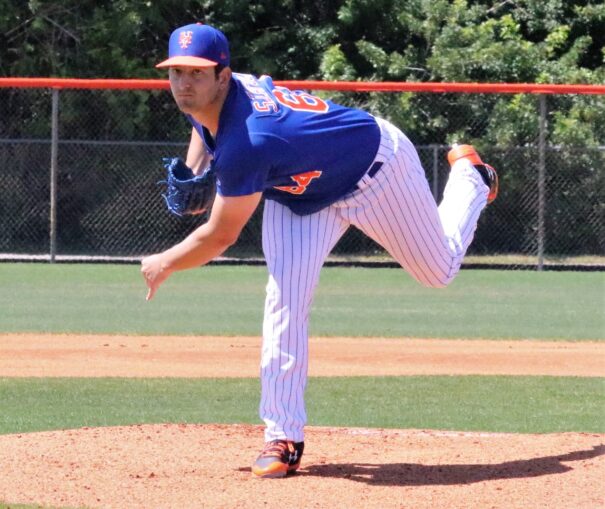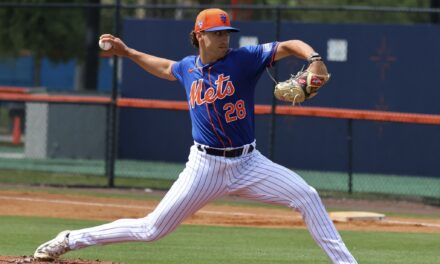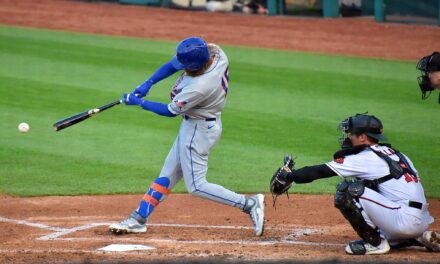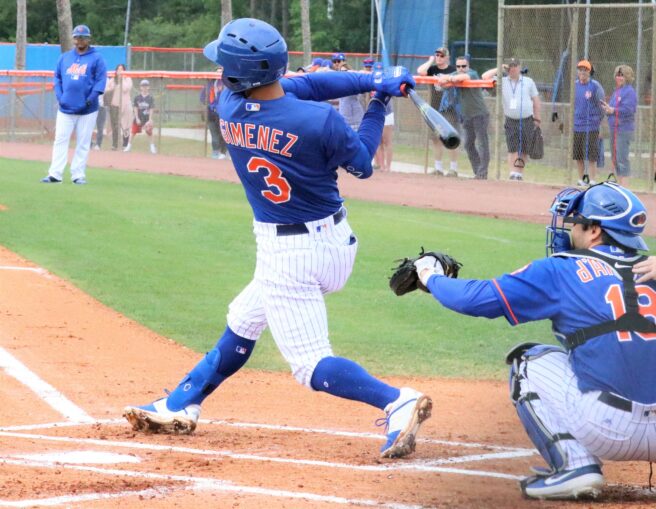
With the 2019 World Series complete and free agency underway, the next notable date on the transaction calendar is November 20, the day by which Rule 5 draft-eligible minor leaguers must be added to the 40-man roster to protect them from being selected.
Last November, a dearth of worthy players resulted in a quiet deadline for the Mets. This year’s date is shaping up to look very different.
Generally speaking, a player who signed his first professional contract at the age of 18 or younger is protected from the first four Rule 5 drafts during which he is a member of an organization. First-time eligibles in 2019 that fall under this category were, for the most part, international signings or high school draft picks in 2015.
If a player is signed at 19 or older, he is only protected from his first three Rule 5 drafts. College draftees from 2016, for example, are eligible for the first time this winter.
Deciding whether or not to shield a player from the draft is the result of a calculation. If a team determines that a player is a) likely to be selected, b) likely to stick on the selecting team’s major league roster for the entire upcoming season (that’s a requirement – the player goes back to his original team if not), and c) would be a detrimental loss to the organization, he will be protected.
It’s important to note that active rosters from opening day through August 31 will be increased to 26 this upcoming season. That extra spot could be used by a non-contending team to stash a promising but unready player to earn the right to send him to the minor leagues and continue his development in future seasons.
The Mets’ 40-man roster is at 37, meaning, as things currently stand, up to three players can be added and protected ahead of the 8 p.m. deadline on November 20. If the team wants to add more or have room to select someone in the draft, players will have to be subtracted from the roster via trade, release, or outright assignment.
Let’s break down each of the draft-eligible players with a reasonable chance to be added.
Lock: SS Andres Gimenez
Despite a down year in 2019, the 21-year-old shortstop is a surefire November 20 add. Once the top-ranked prospect in the organization, Gimenez has since been supplanted by high-upside players like Ronny Mauricio and Brett Baty but still carries a valuable profile.
Changes to his swing have widely been cited as the reason for a poor showing in 2019 with Double-A Binghamton (where he was one of only three players in the Eastern League aged 20 or younger), but he still managed a 105 wRC+ and hasn’t lost anything off his plus-glove and legs, which allowed him to lead the organization with 28 stolen bases. Gimenez was able to end his year on a high note, winning the Arizona Fall League batting title with a .371 clip in 18 games. Whether that environment is the best for judging talent, who’s to say, but it certainly doesn’t hurt to put up good numbers against other teams’ top arms.
Even though he’ll be added to the 40-man roster next week, Gimenez might not see major-league action until late 2020, if at all. That changes if he lights Triple-A on fire, but the new rules limiting September rosters to just 28 do not help the cases of young players like Gimenez who previously would have been able to get his feet wet toward the end of the season.
Lock: LHP Thomas Szapucki
No one really knew how Szapucki’s 2019 season would unfold. After missing a season-and-a-half while recovering from Tommy John surgery, an arm that looked like it had top-100 potential pre-surgery was now in a wait-and-see phase. Ultimately, the 23-year-old pitched to mixed results.
On the one hand, the numbers were good. Szapucki tore through Low-A Columbia, just five earned runs in 11 starts. He then struck out 42 batters in nine starts with High-A St. Lucie before ending his season with a scoreless outing for Binghamton.
On the converse, there was a lot not to like. The Mets played it extremely safe with Szapucki all season, as he didn’t exceed four innings in a start until July and averaged just under three innings per outing for the year. He was deactivated for extended periods in April and May and, despite being on the original list of players heading to the Arizona Fall League, he was removed to “give his arm a rest for a little while,” according to Newsday.
While his velocity might not be back to where it was pre-surgery (there are actually conflicting reports here; some had him up to 96 mph while others saw him sit low-90s), Szapucki’s raw talent and potential when healthy is too great to leave him unprotected in the draft, where a rebuilding team would pounce at the opportunity to stick him in their bullpen. Like Steven Matz, another high school lefty who missed significant minor league time with injuries, Szapucki is likely to be added to the roster but be held in the minor leagues for all of next season.
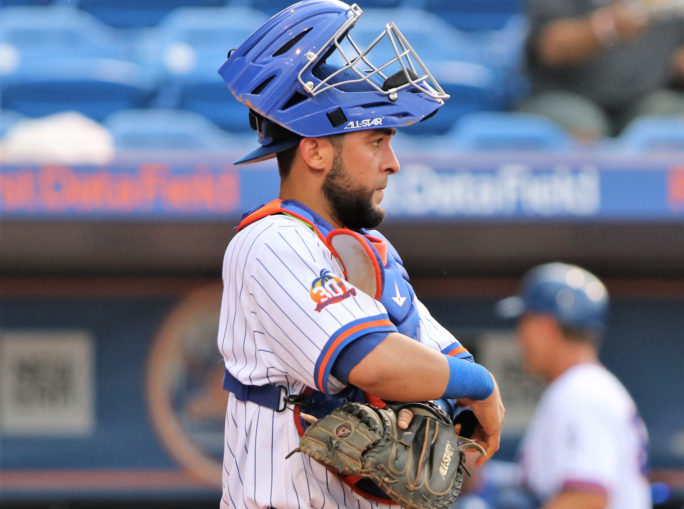
Photo: Ed Delany, MMO
Possible: C Ali Sanchez
Sanchez was freely (O.K. not freely, a Rule 5 selection costs $100 thousand – $50 thousand if he is returned to his original team) available last winter, but ultimately remained in the system. The Mets might not be able to take the same risk this go-round.
If the current state of catching in the organization wasn’t what it is, this would probably be an easy pass. However, between Wilson Ramos‘ defensive woes, Tomas Nido‘s lack of major league performance and status as an out-of-options player, it would be logical to throw another name into the mix.
Sanchez has struggled to hit his entire career, but he has consistently been scouted as one of the best pitch-framing backstops in the minors and threw out 44 percent of base-stealers in 2019.
There isn’t a ton of risk in leaving Sanchez exposed, but it’s fair to assume that he sees major league time in the near future.
Possible: RHP Jordan Humphreys
Humphreys, like Szapucki, sat out all of 2018 after reconstructive UCL surgery. Unlike Szapucki, however, Humphreys was barely able to pitch in 2019.
The 2015 18th-round draft pick appeared to be on the verge of a breakout in 2017 when he dominated the South Atlantic League with a 1.42 ERA and 80 strikeouts in 11 starts. After two forgettable outings in St. Lucie, Humphreys would not see game action again until this past summer when he threw two innings in the Gulf Coast League before shutting it down again. He resurfaced in the Arizona Fall League and led the Scottsdale Scorpions with an 0.77 ERA in 11.2 innings, also showing that his low-90s velocity was back to where it had been.
A healthy Humphreys is an interesting pitcher, one that seems destined for some kind of back-end rotation or swingman role. His injury history, however, may be enough to scare teams away from biting the bullet.
Possible: RHP Ryder Ryan
Of the seven minor league relievers acquired in 2017 as the Mets sold off their veterans (that’s going to be a great trivia question in ten years), Ryan is the only one who has yet to debut in the majors. His second crack at Double-A as a 24-year-old was ultimately more successful than the first.
Take out two forgettable spot starts and Ryan, who has spent his entire career as a middle reliever, had a 1.58 ERA. His fastball sits 93-94 mph, reaching 95-96 mph, but he doesn’t carry overbearing stuff and is likely the sixth or seventh guy in a major league bullpen.
He’s going to get a shot eventually, as he’s at least as good as what the Mets have been trotting out at the back of their bullpen, but his ceiling will likely prevent him from needing to be added to the roster right away.
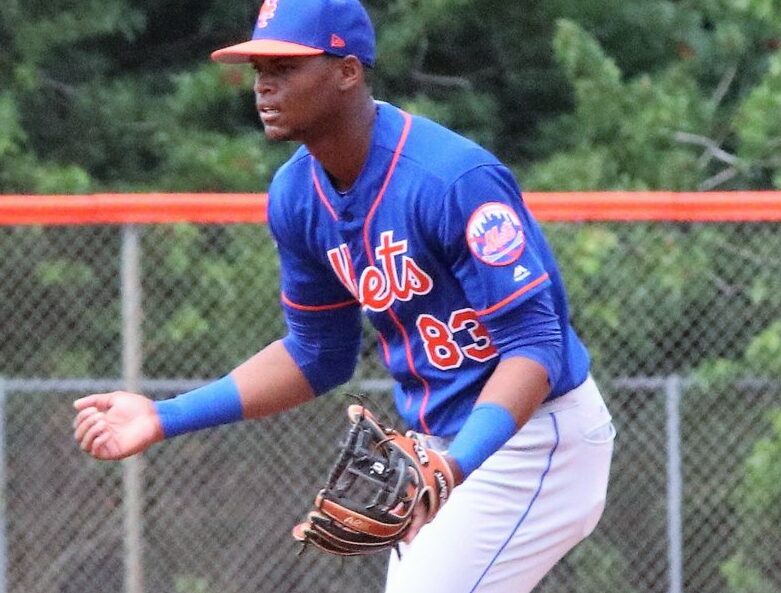
Ed Delany/MMO
Unlikely: 2B/SS Shervyen Newton
Shar-vee-in Newton, a native of the Netherlands, burst onto the scene with a .857 OPS for Rookie-level Kingsport in 2018. He followed it up with a dreadful performance at Columbia this past summer (partially due to a lingering shoulder issue), thus likely avoiding a draft selection given his age, brief track record, and distance from the major leagues.
Newton, a switch-hitter, has serious raw power that could develop even further once his 6-foot 4-inch, 180-pound frame fills out. He’s athletic and strong in the field, but at this point in his career, his range of outcomes is incredibly wide and the holes in his game are too pronounced (e.g. a 33 percent strikeout rate in Low-A), which should be enough to guarantee that a team won’t be able to keep him on their roster for the entire 2020 season.
The door is still open, though. Recent trends show that teams have been more willing to stash raw talents knowing they will have the right to option them in the future. This is worth keeping tabs on.
Unlikely: C/1B Patrick Mazeika
Mazeika repeated Double-A as a 25-year-old in 2019, improving his offensive numbers, as would be expected. He matched two-thirds of his 2018 home run total in May alone and, at one point, held a 24-game hitting streak.
Mazeika, a Stetson alum, also saw far more time at first base this season than at any point in his career. He doesn’t stand out there or behind the plate, so it’s his bat that will continue to carry him throughout his career. Still, it’s been too inconsistent to warrant serious prospect status or risk of losing him to Rule 5.
Unlikely: 2B Luis Carpio
Carpio, still just 22, has regained some of his former prospect status but isn’t approaching the top-10 in the system level he once was. He reached Double-A for the first time in May and was Gimenez’s primary double-play partner from that point on.
Carpio’s defense isn’t notable and his bat shows flashes of major league average but not for extended periods of time. After hitting 12 home runs with St. Lucie in 2018, his power returned to where it had been; in five other seasons, Carpio has combined to hit eight home runs.
Carpio, like Sanchez, will be a minor league free agent after the 2020 season if not added to the 40-man roster by then.
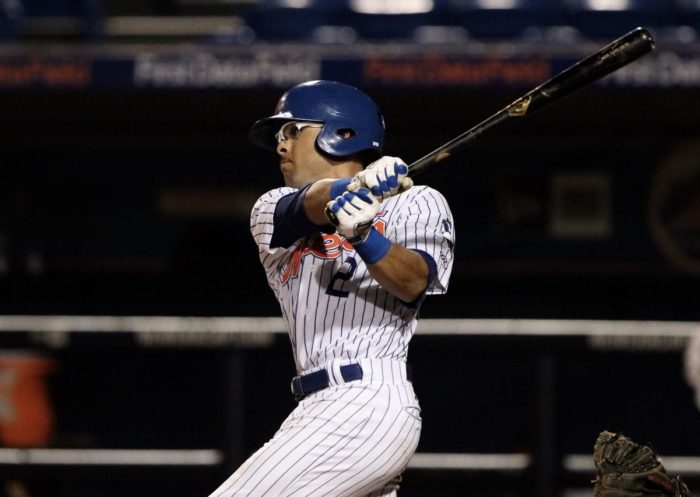
Photo by Ed Delany, MMO
Other Names to Know
RHP Matt Blackham was just about the only Mets farmhand who succeed at both Double-A and Triple-A in 2019. He’s been in the system for six years now and throws a 92-94 mph fastball with a nice breaking ball. He won’t be taken in the Rule 5 Draft but he’s a candidate to reach the major league bullpen if he posts another sub-3 ERA in Syracuse in 2020 (after which he would normally be a minor league free agent), although he’ll be 27 for the entire season.
RHP Harol Gonzalez is simply fun to watch pitch. He commands the zone well, limits walks, and genuinely enjoys playing the game of baseball. He doesn’t throw hard, however, and he began to get bit by the home run ball despite an otherwise strong performance this past season. The Mets have an extremely shallow list of pitchers that you would trust in a spot start if you needed someone from your system on a whim. Gonzalez is probably near the top.
OF Desmond Lindsay, the Mets’ top selection (second round) in the 2015 draft, was supposed to have broken out by now, but injuries have had their way with the athletic center fielder. He struggled out of the gate with St. Lucie last April but never got a chance to redeem himself, tearing his hamstring after 15 games. That specific ailment has plagued him since high school and limits his upside until he can prove otherwise.
RHP Joe Zanghi has an interesting background (a catcher at Southern New Hampshire, Zanghi had his post-draft contract voided by the Reds and went to junior college, where the Mets, his childhood team, picked him out) and his rise through the organization has been notable. He’s flashed plus velocity but he struggles with control and was greeted rudely in five Triple-A outings.


